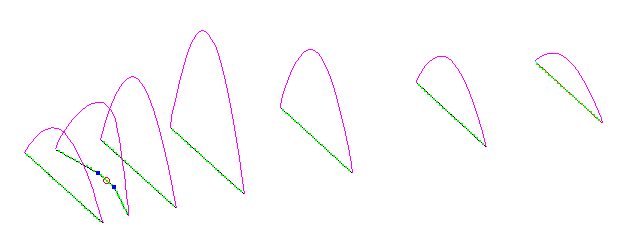
GTV 50-7n Yagi with bent Driven Element
EME + SSB narrow bandwidth version ( ... strictly G/T breeding *)
see mk 2 design here
This medium length Yagi has a high F/R. It may serve as a contest stack or "small" but effective EME 4-Yagi-Bay.
The bent DE (K6STI style) transforms from approx. 17 ohms to 50 ohms at feed point for direct feed. It is a Blueprint of
the 144 MHz version with focus on F/R and relative bandwidth at above average class gain - a specific adaption to
the needs on the 50 MHz band were G/T is not all.
(*) The G/T number is of limited use on 6 meters due to almost equal sky and earth temperatures.
So a few sidelobes will not spoil the performance of a 6 m design as much as it would on 144 or 432 MHz Yagis.
Nevertheless a clean pattern and some band width may always be welcome. The first one to keep as clear as possible
from side splatter or intense human made noise sources, the other for easy reproduction. The question is, how much
gain or wet weather stability is a designer willing to sacrifice to cleaner pattern or gaining some band width?
A good design for 6 m should be balanced between GAIN, F/R ratio and band width;
emphasising these parameters in order of appearance.
ele. 12 mm ele. 5/8 in.
Gain vs. isotr. Rad. 12.7 dBi 12.8 dBi
Gain vs. Dipole 10.6 dBD 10.7 dBD
-3 dB H-plane 42.2 deg. 41.8 deg.
-3 dB E-plane 49.2 deg. 48.8 deg.
F/B -24.0 dB -23.8 dB
F/R -23.1 dB -22.7 dB
Impedance 50 ohms =
Mechan. Length 8542 mm =
Electr. Length 1.43 λ
Stacking Dist. h-pol.
top-to-bottom 7.18 m = 23.6 ft
side-by-side 8.30 m = 27.2 ft
Geometry
Pos. 1/2 Length 1/2 Length Full Length
in NEC in NEC free space
Refl. 0 1455.5 1454.0 2906
DE(b) 480 287-1356 287-1354 2716
DE(a) 721 0-287 0-287 (0-287)
D1 1262 1396.0 1394.5 2780
D2 2424 1370.0 1368.5 2724
D3 4273 1344.0 1342.5 2670
D4 6551 1307.0 1305.5 2594
D5 8542 1259.5 1258.0 2504
ele. 12 mm ele. 1/2" ele. 5/8"
The Drivers diameter is 18 mm for metric and 3/4" in imperial measures.
Note: 5/8" is suitable for 16 mm metric as well
Use EZNEC's Auto-Segmentation at 135 MHz.
Pattern and VSWR Plots
Elevation and Azimuth plot at 144.1 MHz
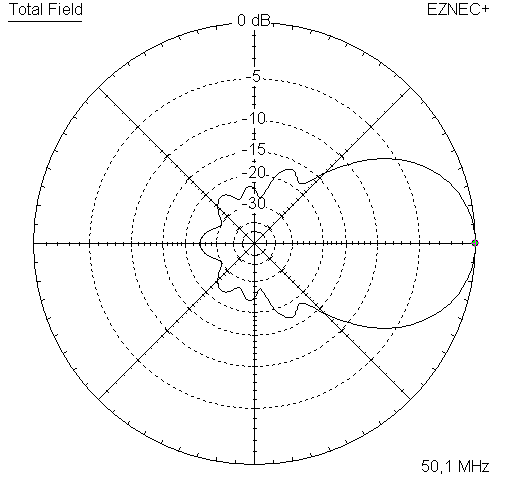
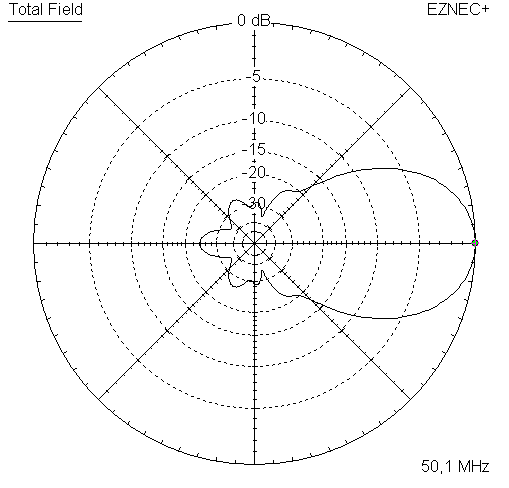
RL and SWR plot - simulated
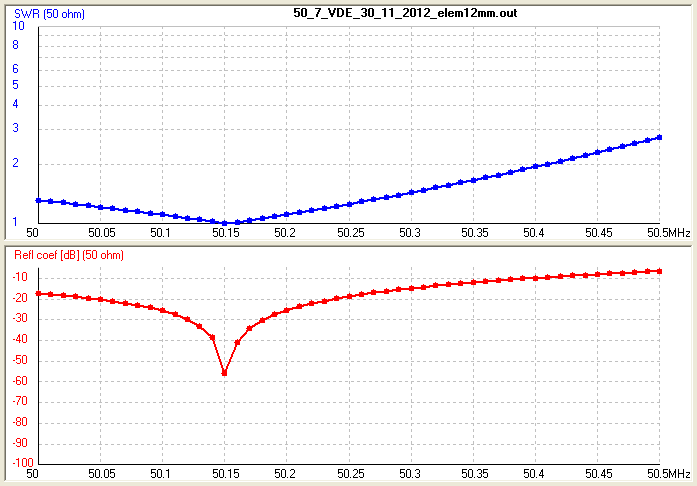
Downloads
EZNEC file of this Yagi (12 mm ele.)
EZNEC file of this Yagi (1/2" ele.)
EZNEC file of this Yagi (5/8" and 16 mm ele.)
EZNEC file of this Yagi as 7 over 7 stack using DL6WU stacking distance
Stacking
Data of of 7 over 7 stack using DL6WU stacking distance 7.18 m = 23.6 ft
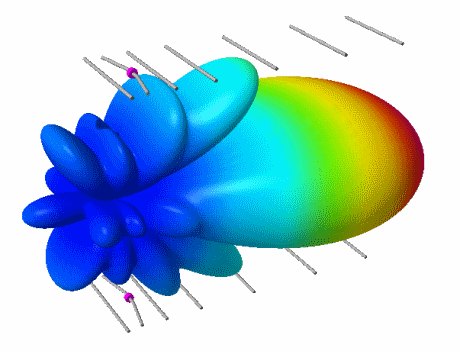
ele. 12 mm
Gain vs. isotr. Rad. 15.7 dBi
Gain vs. Dipole 13.6 dBD
-3 dB H-plane 42.4 deg.
-3 dB E-plane 22.0 deg.
F/B -25.7 dB
F/R -23.0 dB
Theoretical numbers, no phasing line lossesnor imperfections caused by H-frame included
Elevation and Azimuth plot and data of 4 Yagi bay using DL6WU stacking distances
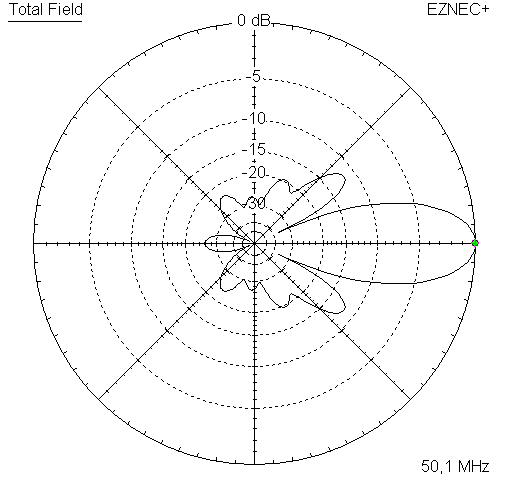
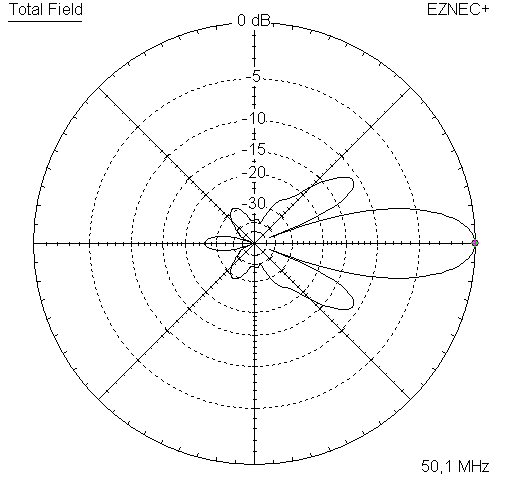
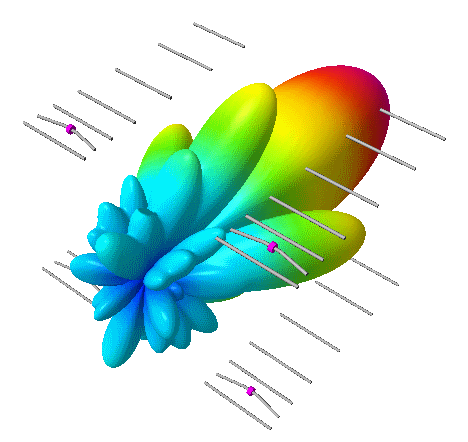
Gain vs. isotr. Rad. 18.7 dBi Gain vs. Dipole 16.6 dBD -3 dB H-plane 18.8 deg. -3 dB E-plane 22.0 deg. F/B -25.6 dB F/R -23.4 dBTheoretical numbers, no phasing line losses
nor imperfections caused by H-frame included
73, Hartmut, DG7YBN
